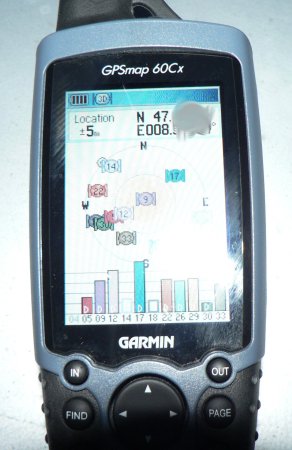
In my previous post, I ranted about the fact that my new Garmin GPSMAP 60Cx would not use EGNOS signals, whereas my old GPS 60 would. However, this weekend I took my GPSMAP with me on a hike, and at a certain post I noticed that I had indeed obtained a differential fix (and a EPE of about 3 m).
Today, this happened again, but now I had my camera handy to catch the unit in the act (see left). The image clearly shows a differential fix, where Garmin channel #33 (PRN 120) is providing the differential corrections. The second thing that stands out, is that the bar for channel 33 is solid (rather than open). On my GPS60, the EGNOS bar would usually be open, but I would still get differential corrections. It happened to me only once on the GPS60 that the EGNOS bar was solid. After asking around on usenet, I appeared that an EGNOS' satellite bar is solid only if the EGNOS satellite sends actual ranging data for itself,
in addition to the correction data for the other satellites.
It seems that the GPSMAP 60Cx uses EGNOS perfectly, but only if the EGNOS satellite sends out ranging data for itself in addition to correction data for the other satellites. Does anyone have any experience on this with WAAS? Do WAAS satellites do this?